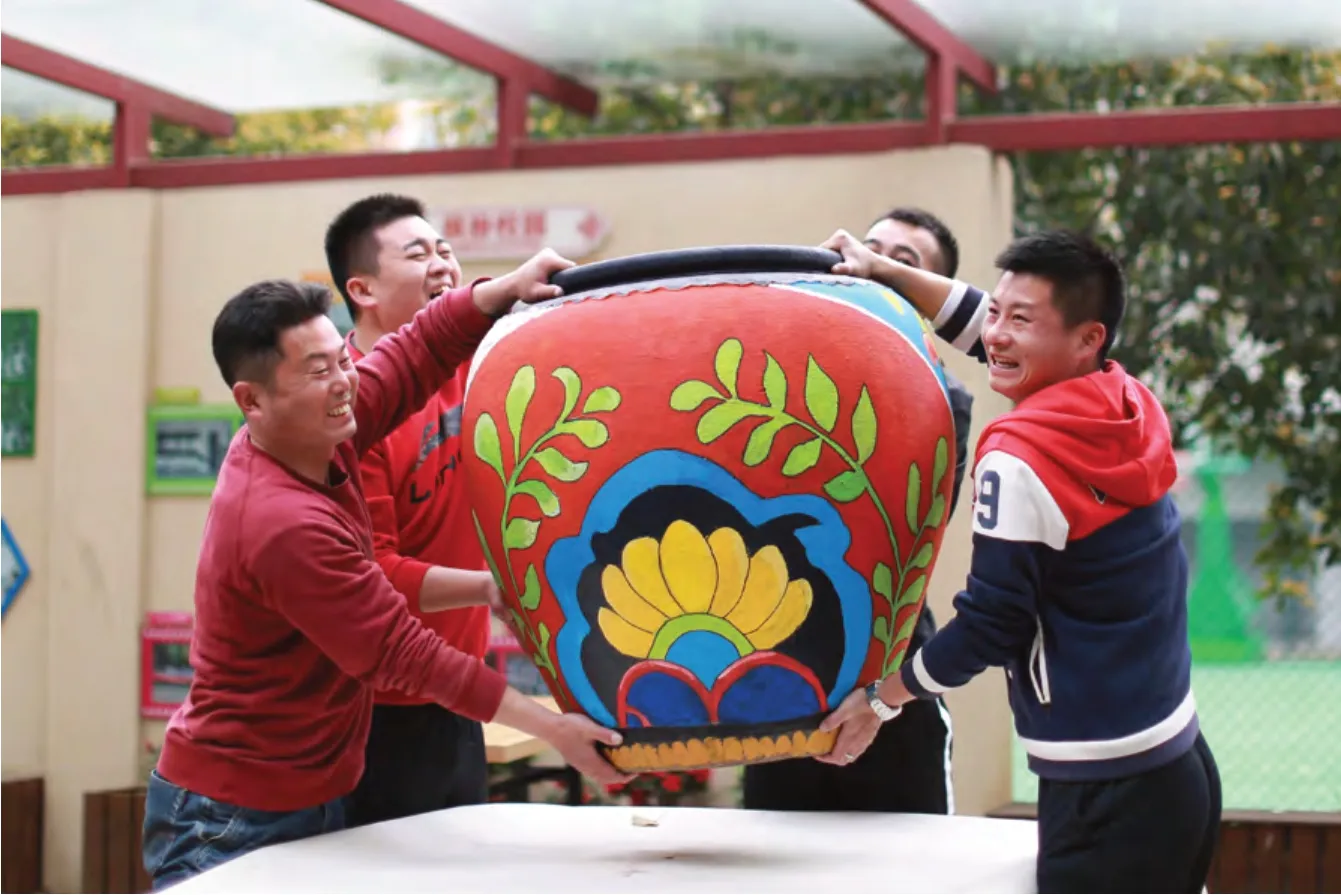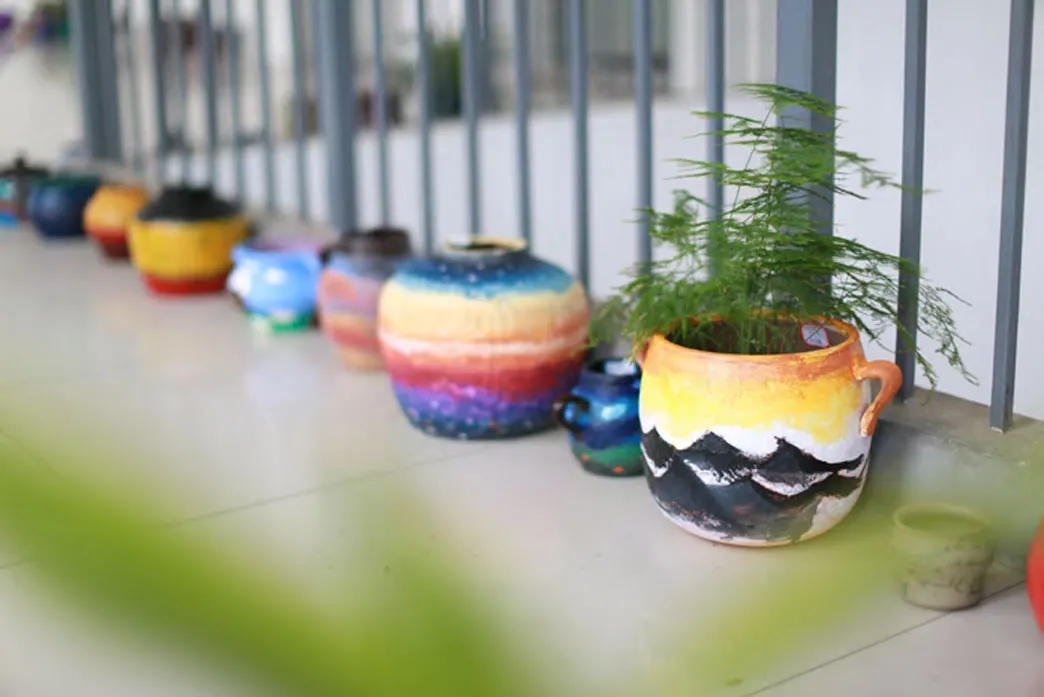A Pottery Museum Initiated by Teachers and Students
By Zhang Ping,Huang Shifeng & Dai Xuefen
Wuhan Optical Valley Experimental School in eastern Wuhan held its first pottery-painting exhibition this spring. It was a special learning activity for students to appreciate Chinese pottery culture and repurpose old pots by painting pictures on them. Excellent works of students were singled out for display at the exhibition.
The outdoor exhibition was held along the main road in the school. Dozens of ceramic wares,with various colors and patterns painted by students,were on exhibition.
Beginning at the end of last year,the school launched an activity dubbed “Picking up Pottery in the Countryside” to encourage both teachers and students to collect wasted pottery. Now,over 3,000 pieces of pottery have been collected.


When the teachers and students returned to their hometowns for holidays,the school requested that they bring back old ceramics to the school and share the story of the pottery with each other. Relatives living in the students’ hometowns also helped to collect pottery.
During last winter vacation,Dai Xuefen,a history teacher,spent the Spring Festival at home in Xinzhou District,Wuhan. She asked her father to pick up pottery for her and her father took it rather seriously—he went around houses in the village to find used pottery and even dredged for a big pot in a pond. Other relatives of her also joined in after they heard about this activity and found more than 70 pieces. Dai Xuefeng hired a truck to carry them all back. She said other teachers brought even more collections of pottery back with them. Within a single journey,some accumulated a hundred pieces. For instance,Xia Donghai and Qiu Guosheng,two of her colleagues,once learned that one village was going to be relocated,to which they drove their cars to and fetched hundreds of used pots.
So why an urban high school would become so interested in used pottery from villages? The principal,Ma Guoxin told us that used pottery brought from corners of the villages and house yards serve as a bridge between education and life. Pottery,an important utensil in Chinese life,embodies memories of traditional daily life—even the culture of a nation. Teachers and students are able to obtain better knowledge of history,as well as nostalgia for their hometowns through their collections. Meanwhile,the artistic works on those used wares witness the implementation of aesthetic education.
The once rugged jars and pots have now been transformed into various artworks. Students’ works can be found in nearly every classroom. Flowerpots and decorations are displayed in the corners of stairwells,by the side of the platforms,or rails and the like. Art exists everywhere and the whole school has become a “pottery museum.”
(Translation: Tang Lin)



